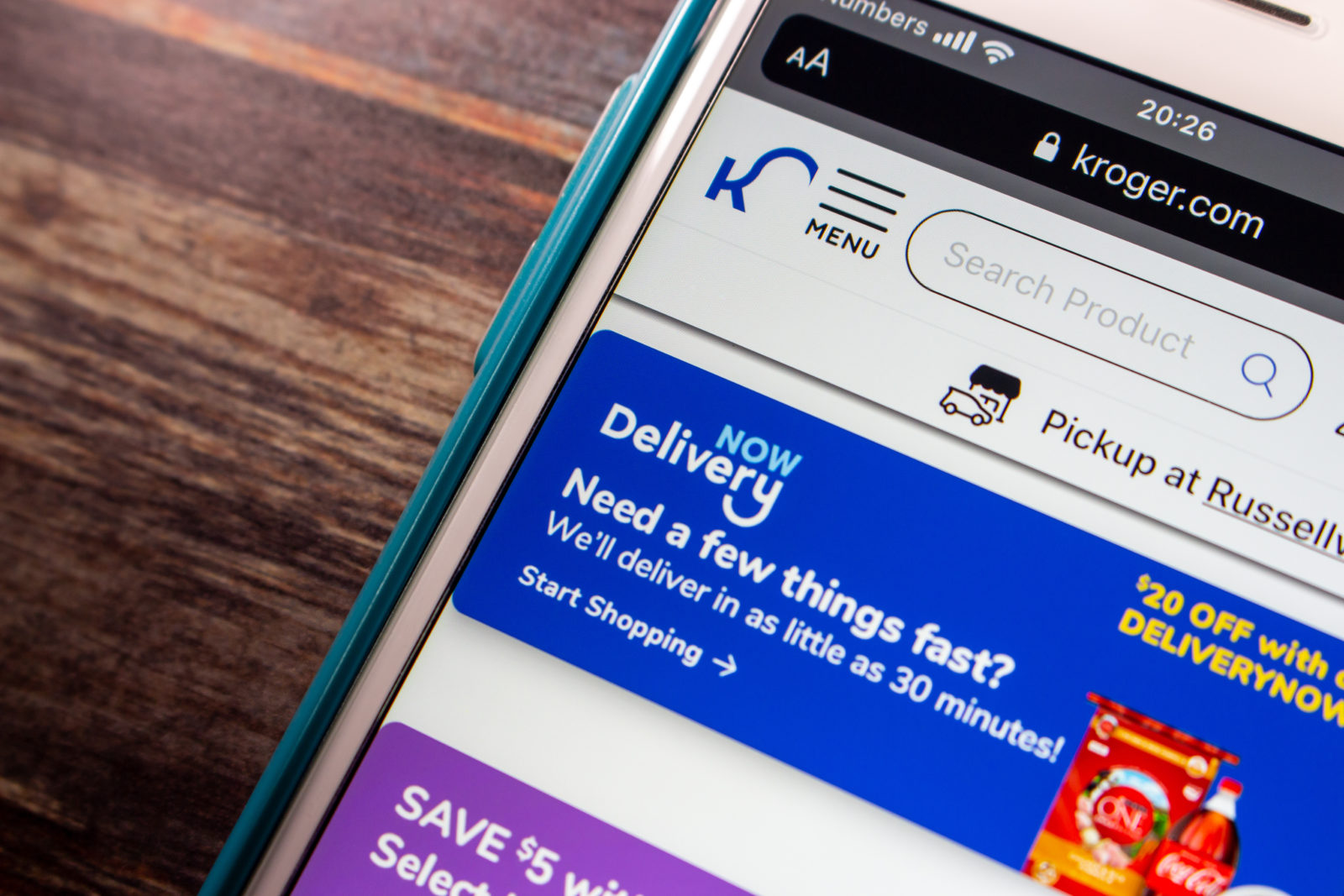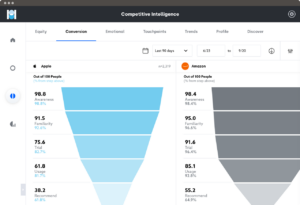Brief • 3 min Read

According to QuestBrand data, Kroger Delivery was the fifth highest growth retail brand (by brand equity growth) from Q2 to Q3 2022.
Kroger Delivery achieved this distinction with a rapid expansion strategy that bets on the long-term popularity of grocery delivery. Grocery delivery gained steam during the COVID-19 pandemic, as consumers looked to reduce exposure to the deadly virus. While the threat of COVID is largely behind us, many consumers have continued to order groceries, willing to pay a delivery fee for the convenience of shopping from home. Older consumers and parents with young children have been especially enamored with the help these delivery services provide.
“Kroger Delivery is part of our rapidly expanding seamless ecosystem that provides customers with fresh and quality products when and where they want it – all with zero compromise and at an incredible value.” – Bill Bennett, Kroger Vice President and Head of Ecommerce.
Want to discover more retail trends? Check out our Retail, Grocery & Ecommerce: An Industry Snapshot report for insights and brand rankings.
Kroger reimagines expansion
Despite its status as the largest supermarket in the US, Kroger was still looking to reach the wallets of more consumers. Rather than opening more stores across the country, they established (largely automated) regional distribution centers, known as “hubs,” and smaller “spoke” facilities.
Each hub is equipped with approximately 1,000 robots that travel across a grid (called The Hive) to fulfill grocery orders and prepare them for pickup. Algorithms ensure that the bots intelligently pack grocery bags to protect fragile items, minimize bag usage, and to ensure consistent bag weight.
Consumers can order from within a 90-mile radius of each hub or spoke facility. This method has greatly expanded the number of consumers that can access Kroger grocery products. In the third quarter of 2022, Kroger Delivery announced new spoke facilities in the Chicago, Birmingham, and Nashville metro areas.
“This network enables Kroger to add scale, achieve reliability of experience, gain from the benefits of automation and ultimately widen our customer reach in current operating regions and new parts of the U.S.” – Gabriel Arreaga, Kroger Senior Vice President and Chief Supply Chain Officer.
Membership fosters loyalty
Consumers have a lot of grocery options. It is particularly hard for Kroger Delivery to gain a stronghold in markets where they lack physical stores. To incentivize shopper loyalty, Kroger Delivery offers Boost by Kroger, an annual membership program.
For either $59 or $99 a year (depending upon the selected membership tier), members receive financial benefits, including free delivery for all orders over $35 and fuel points to exchange for discounted gas. Kroger expects Boost members to save approximately $1,000 a year on delivery fees and gasoline costs. This is an especially attractive draw in the face of 2022’s rampant inflation.
Kroger has seen higher customer retention and delivery sales in the markets where they launched Boost last year, foreshadowing positive growth in Tennessee, Alabama, and Illinois. Fortunately for shoppers, Kroger is working on rolling out the Boost membership program nationwide. They are hoping that their membership program will result in more than $20 billion in ecommerce sales by the end of 2023.
Kroger Delivery’s impressive brand equity growth
Brand equity is an average of four components: consumer familiarity with the brand, perceived brand quality, purchase consideration, and perceived momentum. Kroger Delivery’s quarter over quarter brand equity increased by +3.8, reflecting that consumers saw more value in the brand in Q3 than they did in Q2.
Their fifth place finish (by brand equity growth) is impressive, especially when you consider that this delivery offshoot was competing against big brands, such as Whole Foods Market and Ulta Beauty.
By far, Kroger Delivery's greatest increase was in purchase consideration (+6.2) an important metric for the grocer who is striving to grow and maintain a larger group of loyal shoppers.
Kroger Delivery also noticeably increased in consumer familiarity (+3.5) with their brand which is unsurprising since they grew their footprint in the midwest and southeast by opening new spokes in the Chicago, Birmingham, and Nashville-metro areas.
Grocery delivery is not new for Kroger. In the 1880s, their founder, Barney Kroger, delivered groceries from his single Cincinnati location in a horse-drawn cart. But Barney would be in awe of the size and scope of Kroger's current delivery reach, which has replaced Barney's horse with an army of robots and refrigerated trucks to serve customers across the country.
Subscribe for more Insights
Subscribe to our newsletter for the latest trends in business, politics, culture, and more.

Related Content









